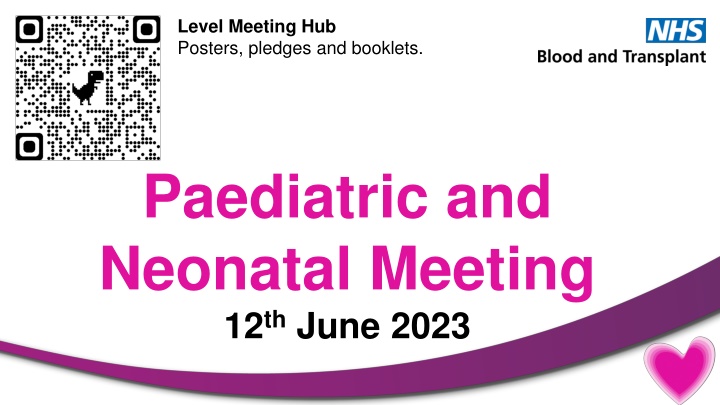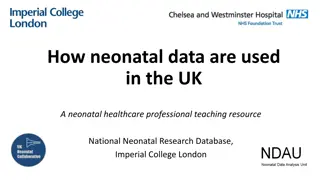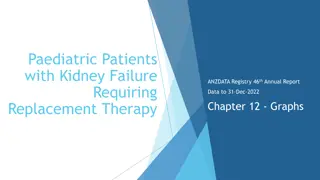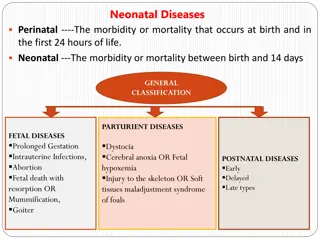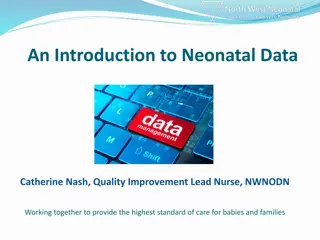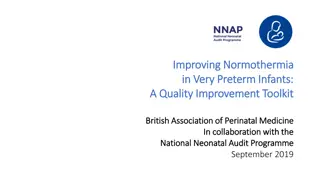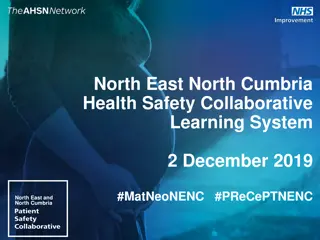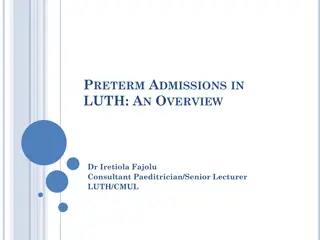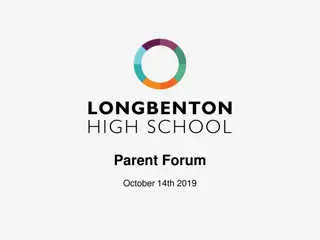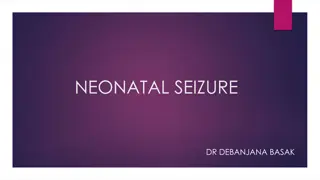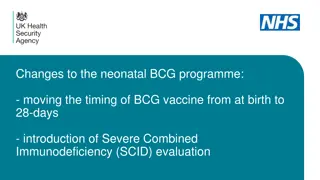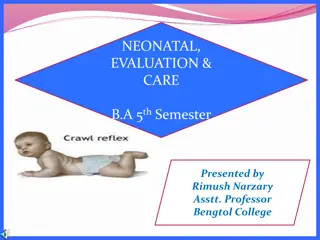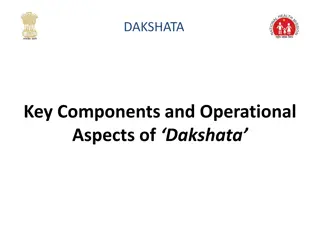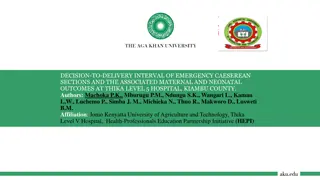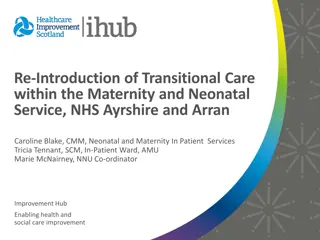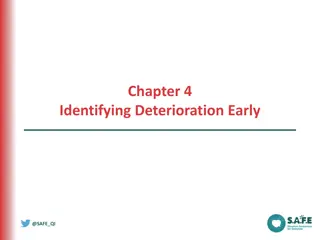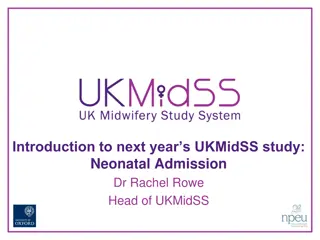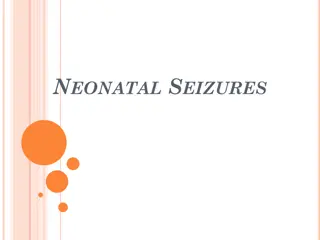Level Meeting Hub Posters and Booklets for Paediatric and Neonatal Meeting
The content discusses the objectives, background, current status, distribution, and impact of the CLOD role in the UK healthcare system. It covers the growth of organ donation and transplantation, stakeholder engagement, budget allocation, and hospital-level distribution data. The CLOD role's importance in embedding organ donation culture, enhancing performance, and adapting to future strategies is highlighted.
Download Presentation

Please find below an Image/Link to download the presentation.
The content on the website is provided AS IS for your information and personal use only. It may not be sold, licensed, or shared on other websites without obtaining consent from the author.If you encounter any issues during the download, it is possible that the publisher has removed the file from their server.
You are allowed to download the files provided on this website for personal or commercial use, subject to the condition that they are used lawfully. All files are the property of their respective owners.
The content on the website is provided AS IS for your information and personal use only. It may not be sold, licensed, or shared on other websites without obtaining consent from the author.
E N D
Presentation Transcript
Level Meeting Hub Posters, pledges and booklets. Paediatric and Neonatal Meeting 12thJune 2023
CLOD Review 2023 Level Meetings - June 2023 Kealan Jones Jackie Brander Ian Thomas Dale Gardiner 2
Objectives Examine the current CLOD role in the UK Adapt and develop the role to be able to Meet the Need of the 2030 UK Donation and Transplantation Strategy Explore opportunities to enhance the performance and sustainability of the role
Background Introduced in 2008 Instrumental in the growth of organ donation and transplantation Last review conducted in 2017 The landscape of organ donation, retrieval and transplantation is changing - fundamental interdependence on each other Responsibility to ensure efficient use of resource Wide ranging stakeholder engagement
Where are we now? 248 CLODs 227 PAs allocated 16 R-CLODS Average cost of 1 PA 11,100 6 N-CLODs CLOD budget 22/23 2.52M
Where are we now? DISTRIBUTION OF CLODS BY HOSPITAL LEVEL PA DISTRIBUTION BY HOSPITAL LEVEL Level 4 PAs; 25.25; 12% Level 4 CLODs; 36; 14% Level 1 CLODs; 101; 42% Level 3 PAs; 27.75; 13% Level 3 CLODs; 31; 12% Level 1 PAs; 94.5; 44% Level 2 CLODs; 80; 32% Level 2 PAs; 67.5; 31%
Where are we now? 0.25 PA 0.5 PA 0.75 PA 1 PA 1 2 - - 3 30 23 3 2 1 1 7 67 53 22 14 101 80 31 36 248 Level 1 Level 2 Level 3 Level 4 8 21 82 156 101 CLODs in Level 1 147 CLODs in Levels 2, 3 and 4
The impact of the CLOD Consensus that the CLOD role has been crucial towards the growth of organ donation and transplantation in the UK CLODs have been essential in embedding organ donation in the culture of the intensive care unit working collaboratively with specialist nurses ensuring best practice and providing local expertise The landscape of organ donation, retrieval and transplantation has changed
Meetingthe Need Whilst they remain important in maintaining donation culture, there is a need for the role to evolve Flexibility to respond to local needs Variable opinion as to whether every Hospital should have a CLOD Some regions already have additional regional roles e.g. education, neonates, diversity, research etc We have seen the expansion of Paediatric CLODs and regional paediatric CLODs.
Performance Wide recognition of variability in engagement and commitment A few are recognised as going beyond expectation. However, there are those who underperform and are disengaged Organ donation will continue with/without the presence of a CLOD but loss of focus will result in reduction in performance
Review Variability on how the annual 1:1 review process is undertaken Requirement for clearer structural framework, aims, markers of individual engagement and performance, panel make up
PA Allocation Consensus that PA allocation + structure currently is not appropriate PA allocations can be inconsistent and seemingly arbitrary PA allocations can lack equity based on either the performance/engagement of each CLOD or the respective donation activity of each Trust/Board There was high support for the expanded CLOD roles and a desire to redirect money toward this
A vision for the CLOD role formed around three themes Enhancing the Clinical Champion role. CLODs at the centre of a knowledge culture. Building an engaged and sustainable CLOD network.
A vision for the CLOD role formed around three themes Theme 1: Enhancing the Clinical Champion role How do we move OD from usual to expected part of end-of-life care? How do we make CLODs the go-to person in a whole hospital approach (especially where low donation potential)? CLODs have been pivotal in establishing a donation culture in UK ICUs and EDs. The Meeting the Need Strategy requires a whole hospital approach to organ and tissue donation and retrieval and a local community approach to promotion. How do we put greater emphasis on promotional activity? With the reduction of SNOD embedded time in hospitals with lower donation potential, CLODs are needed to have enhanced visibility. Do we need a CLOD in every ICU? Every hospital? Every Trust/Board?
A vision for the CLOD role formed around three themes Theme 2: CLODs at the centre of a knowledge culture How can we connect CLODs (past, present and future) to increase collaboration and knowledge sharing? Donation culture has changed in UK ICUs and EDs such that donation is usual . How should we approach education within the CLOD network? Organ and tissue donation and retrieval will change significantly in the next 10 years. We now need a robust, capable and reliable system for disseminating and implementing new ways of working and adopting innovation going forward. The CLOD is central to this. Should we be expanding regional specialist roles (e.g., Education CLOD, Paediatric CLOD, Research CLOD) and how should they be mandated? CLODs can perform a vital role in the acquisition, sharing, and application of new practice and key to engaging with wider hospital staff networks to support implementation.
A vision for the CLOD role formed around three themes Theme 3: Building an engaged and sustainable CLOD network. How do we enhance and ensure CLOD engagement? The CLOD network has operational areas that can be improved to enhance engagement and sustainability. How do we make the annual CLOD review process better at performance management and accountability? The CLOD role needs to remain attractive. There is a sentiment that the annual review process can be enhanced to be more effective, with clearer goals, more reliable performance markers, and to better promote engagement, planning, and follow-up. How do we restructure PA allocation to maximise fairness and sustainability? We want to establish a fair and consistent PA allocation system that considers individual performance, local donation activity demands, and new hospital landscapes.
Recommendations The CLOD/SNOD/Chair axis remains the cornerstone of OD. To sustain and build on what has already been achieved, it s important to keep this framework in place. We therefore recommend maintaining the presence of a CLOD at every Trust/Board. There is an ongoing need for CLODs in PICUs. Sustaining the current foundations Evolving the role for a hospital-wide managerial approach To meet the needs of the 2030 strategy and a changing organ donation landscape, the CLOD role should evolve to take on a wider managerial approach in hospitals, enabling organisations to adapt in an agile way to emerging policies and innovations in organ donation and retrieval. Developing a network of regional Education CLODs A regional Education CLOD should exist in every region, working closely with PDS teams, to disseminate knowledge to the wider CLOD network. They should have access to set slides and educational material that can be shared with CLODs to enable teaching to hospital staff. 19
Recommendations A base allocation of 0.5 PA for each Trust/Board CLOD Ensuring we maintain CLOD presence in Trusts/Boards. PA allocation to be reviewed annually. Formalisation of Paediatric CLOD roles. To be allocated by R-CLODs and R-Heads of Nursing (RMs). For topping-up CLODs with higher workloads/outputs/additional responsibilities or to fund additional roles based on local need. A supplementary PA pool Developing stronger guidelines for annual reviews Clearer definition of expectations for the key areas (Performance, Policy, Education, Promotion), and what evidence must be brought to the meeting Mandating the collection of feedback from SNOD, RM, ODC Chairs and ICU Clinical Leads/Director of Unit to inform discussion 20
Recommendations Attendance of respective TMs and/or R-HoN/ODC Chairs at annual reviews Some regions already do this, but it should be made the norm. This could include the presence of an R-CLOD from a different region. Attendance at collaboratives CLODs are expected to attend a minimum of 3 out 4 regional collaboratives over a 2 year period 21
Level Meeting Hub Posters, pledges and booklets. Paediatric and Neonatal Meeting 12th June 2023
